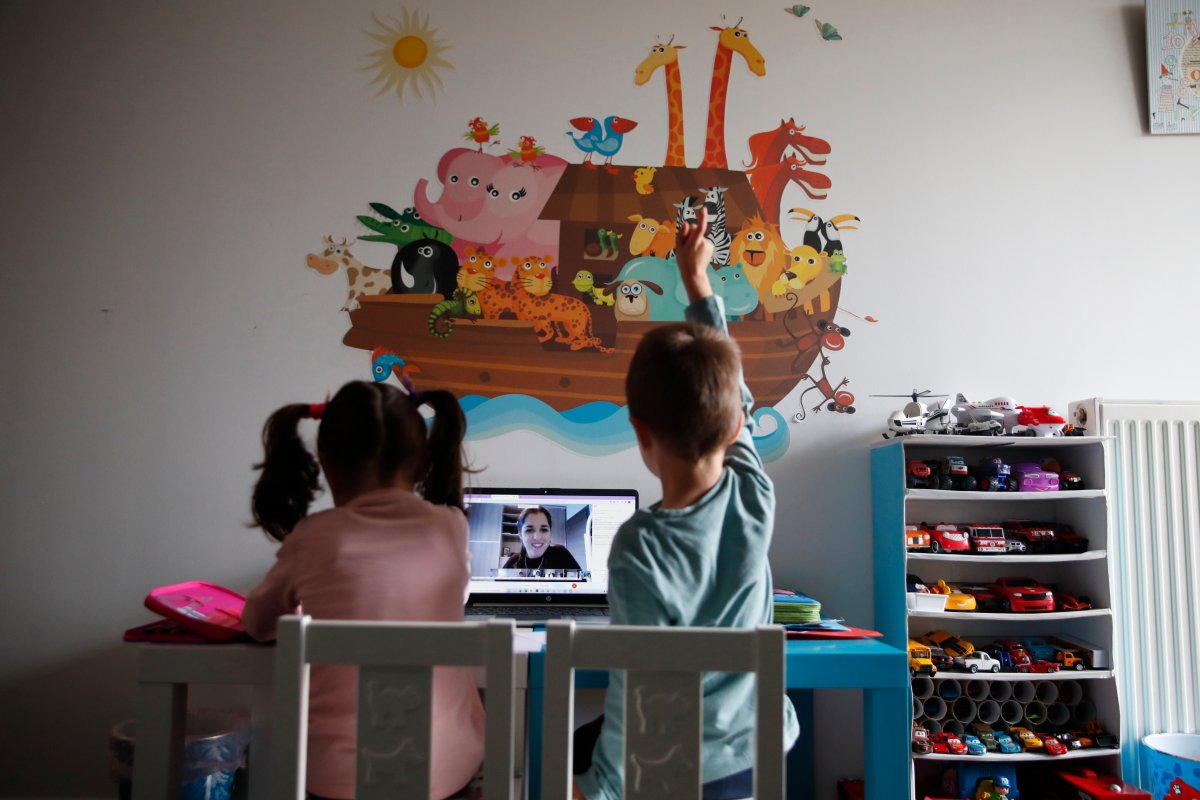With long stretches of online learning, video calls instead of in-person gatherings, and less time spent outdoors, eye doctors across Canada are noticing an overall spike in eye issues, especially among children.

While parents and guardians may not be in a position to reduce screen time during the pandemic, optometrists say there are ways to give your eyes a break.
“I’ve seen an increase of eye fatigue in general across all ages due to the increased amount of screen time, but we’re seeing it a lot more in the pediatric population and we’re also seeing a lot more dry eye as well,” London, Ont.,-based optometrist Mohammad Lawendy told Global News.
“What I have seen significantly increased is people coming in with dry eye that have none of these predisposing factors at all — a healthy three-year-old, a healthy five-year-old. The only thing that I can account for, and a lot of studies have done this, is basically increased screen time.”
Michael Nelson, president of the Canadian Association of Optometrists which has roughly 5,000 members across the country, divides the issues he’s seen in his clinic in Winnipeg, Man., into two categories.
The first category involves symptoms related to increased screen time that will likely go away once screen time is reduced. The second focuses on the potential for long-term impacts.
“The question is: does increased use of a screen cause us to become more nearsighted or more myopic?”
Nelson pointed to a study out of China that found a steep increase in the prevalence of myopia among children in 2020, when kids were confined to the home due to the pandemic, compared to the previous five years.
The study used data from school-based photo screenings of 123,535 children aged six to 13 from 10 elementary schools in Feicheng, China, and found that the prevalence of myopia increased 1.4 to 3 times in 2020 among kids age six to eight, compared with the previous five years. Minimal difference was found in children aged nine to 13 years, according to the study.
Recognizing eye issues in kids
One of the first hurdles in addressing eye issues in children is to identify that there’s a problem in the first place.
It can be a challenge, optometrists say, because kids often won’t complain of symptoms.
“Kids have this incredible ability to adapt to any condition and situation and so often, a lot of kids may not complain,” says Nelson.
“They might think, ‘OK, everyone sees this way’ or ‘this is difficult for everyone.'”
Lawendy suggests parents and guardians keep an eye out for particular symptoms and behaviours.
“When your children are on a screen, just look to see: are their eyes a bit red? Are their eyes tearing up? Because dry eye will cause the eye to water,” he explains.
“Patients who have dry eye, their eyes actually water because there’s a response to the brain saying it’s dry and it’s evaporating quickly. There’s not enough oil on the eye. So it actually tears up.”
Nelson adds that headaches and shorter attention spans when looking at screens are also symptoms to watch for, as well as if a child is rubbing their eyes a lot.
“But probably the best way to do, is just go see an optometrist, take them for their routine eye exam,” Nelson says.
It’s not just kids
Even before the pandemic, symptoms related to screen use among adults were already commonplace.
A joint statement from the Canadian Association of Optometrists and Canadian Ophthalmological Society from 2017 states that “the prevalence of electronic screen-related ocular symptoms is estimated as high as 50–90 per cent in adult electronic screen users.”
Since the pandemic, however, Nelson says “everyone’s using more screens more than we were before.”

Computer vision syndrome, for example, used to be more common among segments of the population whose jobs involved a lot of screen use, but Nelson says he’s seeing more people with symptoms like blurred vision and burning, dry, itchy, red, or watery eyes.
Convergence insufficiency is another growing problem, which involves issues with controlling eye muscles, especially when looking at something up close.
Improper or out of date prescriptions can also cause issues, Nelson says.
For adults, in particular, progressive or multi-focal lenses are not the best choice for looking at a screen all day long.
“You need the right tool for the right job,” he says, “there’s a sub-category lens called an office or a task lens and it’s designed so you can focus on a computer and print material really well and have a normal posture and ergonomic position and not have to tilt your chin up.”
Small changes with big impacts
For prescription issues, the fix is fairly obvious, but Lawendy says there are a number of other small measures to maintain eye health, including simple adjustments to make at home.
“Instead of using an iPad that’s very close, if you have access to a laptop, try and use a laptop, keep it about an arm’s length away, make sure there’s less glare,” he says, adding that you can tilt the screen to reduce glare.
If your child has watery or red eyes or is blinking excessively, he suggests seeing an eye doctor to help choose eye drops or artificial tears to help lubricate the eye.
“In some cases, we actually might give reading glasses. So it’s not glasses that they’ll wear all the time. But maybe just for the computer or just when they’re doing a lot of strain work,” Lawendy adds.
Nelson says it’s important to take breaks away from the screen. He suggests the 20-20-20 rule.
“Every 20 minutes, take 20 seconds and look 20 feet away at something out in the distance or get up and walk around. So you’re not constantly focusing at this distance for long periods of time.”
Most of these eye issues are just symptoms of too much screen use and will probably cease when screen use is limited again, Nelson explains, but not all.
“The one that we’re looking at ‘OK, is there a long-term effect?’ is myopia. And that’s the question, that’s the one that perhaps there is. If it is shown that use of computer screens or up-close tasks or viewing up close does contribute to myopia, then that could be definitely a long term effect.”
Nelson says myopia management is a “huge, growing area in our field” and the World Health Organization has identified it as a global issue.
“The (incidence) of myopia worldwide is increasing, definitely. Globally, we’ve identified that and that’s why there’s a lot of research going into this area.”
One suggestion to slow down the progression of myopia is to spend more time outdoors.
“We know that kids who spend more time outdoors in the sunlight, tend to become less nearsighted,” he says.
There are also different types of glasses, certain types of contact lenses, and even some eye drops designed to try to help slow the progression of nearsightedness, Nelson adds.
While circumstances are certainly unique right now, when conditions do allow for a reduction in screen time, the Canadian Association of Optometrists recommends no screen time at all for infants up to two years old, no more than an hour a day for children age two to five, and “ideally no more than two hours of recreational screen time” for children age five to 18.





Comments